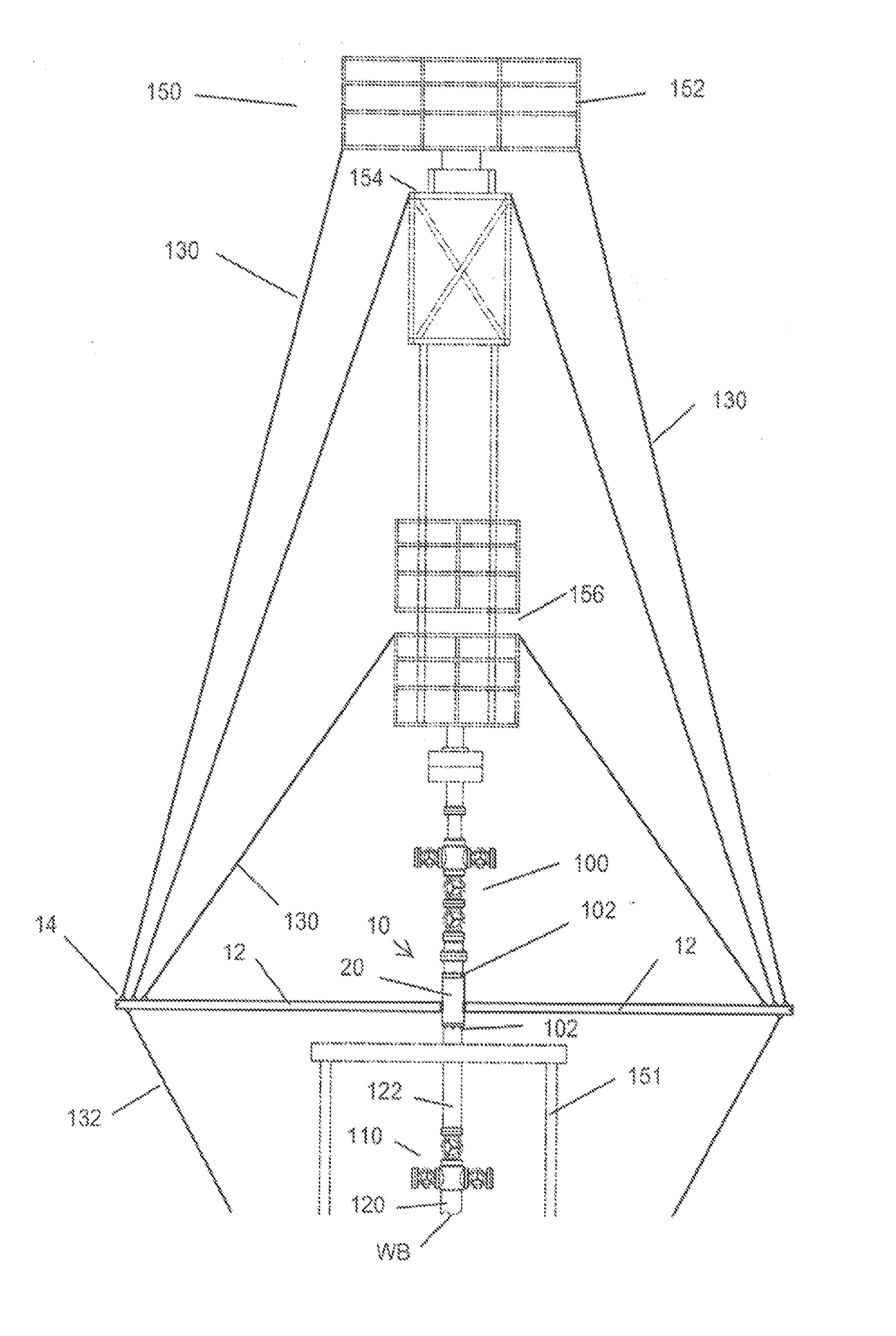Anchor Spool
a technology of anchor rods and spools, which is applied in the direction of drilling pipes, drilling casings, borehole/well accessories, etc., can solve the problems of increased time and expense, increased risk of injury for workers, and inability to perform additional engineering analysis
- Summary
- Abstract
- Description
- Claims
- Application Information
AI Technical Summary
Benefits of technology
Problems solved by technology
Method used
Image
Examples
Embodiment Construction
[0030]FIG. 1 suggests one embodiment of the invention, an anchor assembly including a spool body and a beam support assembly. FIG. 1 shows one embodiment of the spool body 10 (also sometimes referred to as the “anchor spool”10) mounted on casing string 120 of wellbore WB at offshore well platform 151 in a position below BOP stack 100 and axially in line with the BOP stack 100 of the pressure containment system 110 of wellbore WB. The anchor spool 10 has a plurality of detachable, radially extending, cantilevered support beams 12. The support beams are “cantilevered” in one sense by the fact that their distal ends do not have legs extending to a land or subsea surface from which the well stack (as defined below) extends. The anchor spool 10 with the support beams 12 provide a temporary support framework for attachment of guide members 130 extending from the workbasket 152, snubbing jack 154, and work window 156 of snubbing unit 150 mounted upon the BOP stack 100. Guywires 132 may be ...
PUM
 Login to View More
Login to View More Abstract
Description
Claims
Application Information
 Login to View More
Login to View More - R&D
- Intellectual Property
- Life Sciences
- Materials
- Tech Scout
- Unparalleled Data Quality
- Higher Quality Content
- 60% Fewer Hallucinations
Browse by: Latest US Patents, China's latest patents, Technical Efficacy Thesaurus, Application Domain, Technology Topic, Popular Technical Reports.
© 2025 PatSnap. All rights reserved.Legal|Privacy policy|Modern Slavery Act Transparency Statement|Sitemap|About US| Contact US: help@patsnap.com



